
Photo: Carl Zapp
With the advent of stereo simulcasts, stereo on pre-recorded videocassettes and now stereo-TV broadcasting the masters of both Beta and VHS videocassette recorders (VCRs) have finally tuned their attention to sound quality.
The first breakthrough in this area came from Sony, who announced a true, high-fidelity stereo recording system, which they called Beta Hi-Fi.
Compare with the audio performance specifications for the conventional audio tracks of a VCR, the capabilities of Beta H-Fi seemed almost too good to be true. Claimed dynamic range for Beta hi-fi was 80 dB, as opposed to the s/n ratio of 40 dB or so commonly achieved with conventional audio recording on home videotape recorders. Distortion had been cut by a factor of 10--from around 3% to 0.3%! Frequency response, normally no better than from about 50 Hz to 10 kHz at best (and at the higher Beta II speed, at that) was now flat from 20 Hz to 20 kHz. Wow and flutter, perhaps the most annoying defeat in conventionally recorded audio on VCRs, was reduced from as much as 0.4% or more to a negligible 0.005% or less! Basking in the glory of their achievement, the Beta people confidently predicted that the VHS camp (whose share of the exploding VCR market far exceeded Beta's) would not be able to duplicate this audio feat without degrading picture quality.
But, like the proverbial bumblebee who flies because he doesn't know it's technically impossible, the engineers at JVC have created their own hi-fi audio system for VHS-format VCRs. Having listened to the new system and watchers the video pictures accompanying it’s sound, I can attest the VHS Hi-Fi not only works magnificently, but does not noticeably degrade picture quality in any way.
In the past several months, many VHS licensees have begun to sell VCRs with the new VHS Hi-Fi stereo capability. As these machines became available, I began to hear rumors that there were, some problems with the VHS Hi-Fs system. There was talk of incompatibility; stories about some prerecorded videocassettes not playing properly on some VHS Hi-Fi machines. Some VHS supporters insisted that these rumors had been started by supporters of the Beta format. Others insisted that the problems were real and that they did, indeed, exist. Still others said that the problems were not in the VHS Hi-Fi system itself, but rather with duplicators grown careless in their haste to fill a need for prerecorded cassettes incorporating the new and better sound.
In the face of all this talk, the Editor of Audio Magazine and I decided to measure the audio quality of a few of the first VHS Hi-Fi machines. We tested five VHS Hi-Fi VCRs, from JVC, Jensen, Panasonic, RCA and Sharp. Then, to provide some frame of reference, I also measured one VHS model with conventional, longitudinal-track stereo sound, from GE. That unit was equipped with Dolby noise reduction, and all of the audio measurements were made with the Dolby circuits-on.
Before I tell you about the tests and their results, it might be useful to outline the principles behind VHS Hi-Fi and, for that matter, the operation of conventional audio recordings on videocassette tape. Before the advent of Beta Hi-Fi or VHS Hi-Fi, the audio track (or tracks, in the case of stereo) on home videotape was a mere 1 mm wide and ran along an outside edge of the tape. Longitudinal linear tape speed in VHS machines is only 1.31 inches per second at the fastest (SP) speed. Beta machines run even slower, around 0.8 inch per second at their fastest (Beta II) speed. Audio cassette decks, by contrast, run at 1.875 inches per second and have tracks just about twice as wide as the longitudinal audio tracks on a VCR. All this should help explain why audio performance using a VCR's conventional soundtracks is as poor as it is.
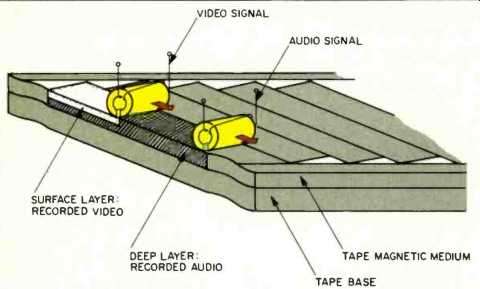
Fig. 1--In Depth Multiplex recording, separate heads lay down the FM
audio signals first, followed by the video.

Fig. 2--Frequency spectra of conventional (top) and VHS Hi-Fi recording.
Note overlap of video and Hi-Fi audio tracks, requiring Depth Multiplex
technique.
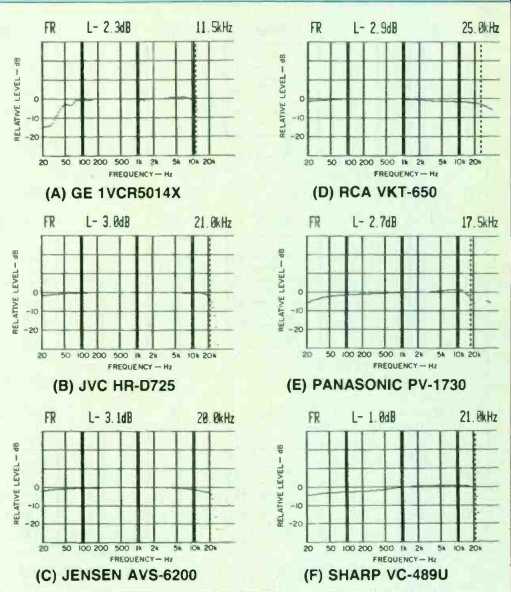
Fig. 3--Frequency response at -10 dB indicated recording level.

TABLE I: AUDIO PERFORMANCE--MEASURED
Like Beta Hi-Fi (Audio, May 1983), VHS Hi-Fi records audio as frequency modulations on two r.f. carriers (one per stereo channel). But the Beta system mixes these FM signals in with the video signals recorded and played by the regular video heads. By contrast, VHS Hi-Fi, because of a different frequency spectrum (the reason Beta engineers doubted VHS Hi-Fi was possible), must use an extra pair of audio heads to record these signals. These heads are not stationary, like the conventional-track audio heads, but are mounted on the same rotating drum as the video heads. Thus, for a VCR having four video heads, the total number of heads on the drum would be six.
The audio signals are recorded by a process which JVC calls "Depth Multiplex." First, the two audio-channel signal carriers (whose frequencies are 1.3 MHz and 1.7 MHz) are recorded deeply into the tape's magnetic coating.
Then the video signal, consisting of the luminance signal and the down-converted chrominance signal, is recorded on top of the audio signal in a shallower layer, as illustrated in Fig. 1. The video signal spectrum is identical to that of the regular VHS recording system, with the FM luminance (brightness) signal having a deviation or FM spread of from 3.4 to 4.4 MHz and the chrominance (color) signal modulated on a carrier having its center frequency at 629 kHz. During playback, the FM audio signals in the deep layer of the tape are read through the higher-frequency video information recorded on the surface layer.
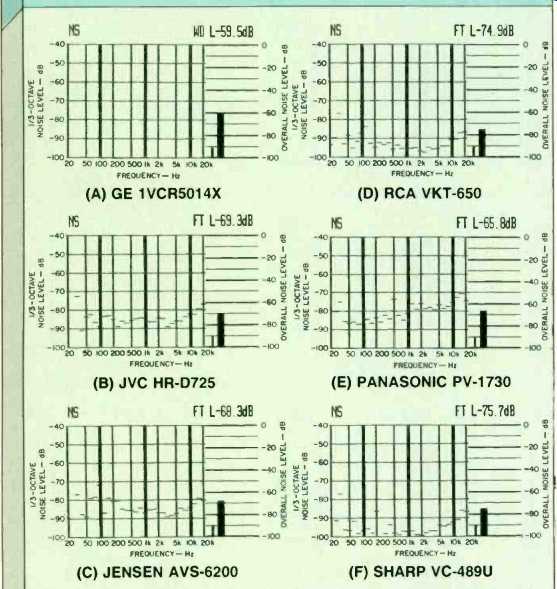
Fig. 4--Signal-to-noise ratio, re: 0-dB indicated recording level. (GE
unit weighted, all others unweighted.)
Frequency distribution for the chrominance and luminance signals in a conventional VHS recorder is illustrated in the upper diagram of Fig. 2. In the lower diagram, the frequency allocation for the extra two audio signals is depicted separately, and it is clear that the video output-signal frequency spectrum remains exactly the same as it was in a conventional VHS VCR. As a result, video recordings remain perfectly compatible between VHS Hi-Fi and conventional VHS machines. Furthermore, the fixed audio head is retained in the new VHS Hi-Fi setup so that older tapes can be played on any of the new VHS Hi-Fi machines. Conversely, recordings made on a VHS Hi Fi VCR will include an audio track recorded by this extra stationary head so that audio (either mono, or stereophonic if a split, stationary head is used) is available if the tape is played on a conventional VHS deck.
The presence of the third, stationary audio head lends itself to other applications. For example, in future prerecorded tapes of foreign-language motion pictures, the pair of VHS Hi-Fi heads on the spinning drum might be used to record the original motion-picture soundtracks in stereo, while the "low-fi" stationary head could be used to dub mono or stereo audio tracks in the local language of the country in which the tape is distributed.
In VHS Hi-Fi, the video heads have azimuth angles of +6° and-6°, while he angles of tilt for the extra pair of audio heads are +30° and-30°. Because of this difference, crosstalk--between audio and video signals and between audio signals on adjacent racks-is effectively suppressed.
The technical specifications for VHS Hi-Fi read very much like those previously announced for Beta Hi-Fi. Frequency response is flat from 20 Hz to 20 kHz. Dynamic range is better than 80 dB. Harmonic distortion is less than 0.3%. Wow and flutter is a negligible 0.005% or less, and channel separation is greater than 60 dB. Frequency modulation improves the dynamic range of the audio signals, to greater than 60 dB. To further expand this range to the claimed 80 dB, VHS Hi-Fi uses a noise-reduction system which, n JVC's words, "is the most suitable or FM recording and playback." Specific details concerning this extra noise-reduction system have not been disclosed.
Tests of the Six VHS VCRs
The six VHS machines tested for this comparison report were full-featured models from GE (not a VHS Hi-Fi), JVC, Jensen, RCA, Panasonic, and Sharp. It is no secret that most of the VHS VCRs manufactured in the world are made by a few Japan-based companies. While that is certainly true, it is not necessarily true that all of the machines made by a single company for other companies are identical. When a company buys a VCR from a manufacturer and puts its own name on it, that company may well have the OEM (original equipment manufacturer) firm customize the machine with features that the purchasing company feels will make the VCR more salable. Some companies who want to maintain higher levels of quality and lower return rates pay their suppliers more for tighter inspection and quality control during production. I would also like to point out that of the six VCRs I tested, I was careful to select machines that come from at least three different prime manufacturers.
As for the lab tests themselves, using my Sound Technology 1500A audio tester, I treated each machine as though it were a high-quality audio tape recorder. I ignored video capabilities entirely, other than to make certain that the VHS Hi-Fi audio recordings did not in any way interfere with picture playback on a video screen. I measured frequency response at nominal -20 dB level, as indicated on each machine's own level meters (Figs. 3A through 3F). I measured unweighted signal-to-noise ratios, relative to each machine's indicated 0-dB recording level (Figs. 4A through 4F). Then I measured third-order harmonic distortion versus recording level, up to + 10 dB. In Figs. 5A through 5F, the dotted line cursor has been set at 0 dB to measure third-order distortion at that point. In Figs. 6B through 6F, the cursor has been set at the signal level where overload (3% distortion) occurs.
(There is no Fig. 6A, as automatic level control keeps the GE's signal level from reaching the 3%-distortion point.) In order to reach this high distortion level, it was necessary to raise the "0 dB" reference on the graphs by 10 dB for all but the RCA unit; the double vertical bar which normally marks 0 dB therefore marks + 10 dB on these graphs. My figures for dynamic range (Table I) are the sum of these headroom figures and my previously obtained S/N measurements.
I also measured second-order distortion (Figs. 7A through 7F) since I found that this type of distortion was generally higher for VHS Hi-Fi machines than was third-order distortion.
The cursor in Figs. 7A through 7F has been set to 0 dB to show distortion at that level. Wow and flutter was also measured and plotted (Figs. 8A through 8F), as was channel separation for each of the machines (Figs. 9A through 9F). For ease in comparing the machines, results of all these measurements for all six VCRs are summarized in Table I. The need for a better audio system than that available from conventional, longitudinal audio tracks of a VCR is clearly apparent when you examine the results obtained for the General Electric model. This unit does quite well as far as signal-to-noise ratio is concerned, thanks to Dolby noise reduction, but its frequency response (measured at the fastest, SP, speed) leaves much (about an octave) to be desired, as does its distortion level and, perhaps worst of all, its high level of wow and flutter. Notice, too, that dynamic range and signal-to-noise ratio are about equal, indicating little or no headroom above the 0-dB record level. In this case, an automatic level control circuit acts as a sort of "limiter" to prevent the system from going deeper into tape saturation.
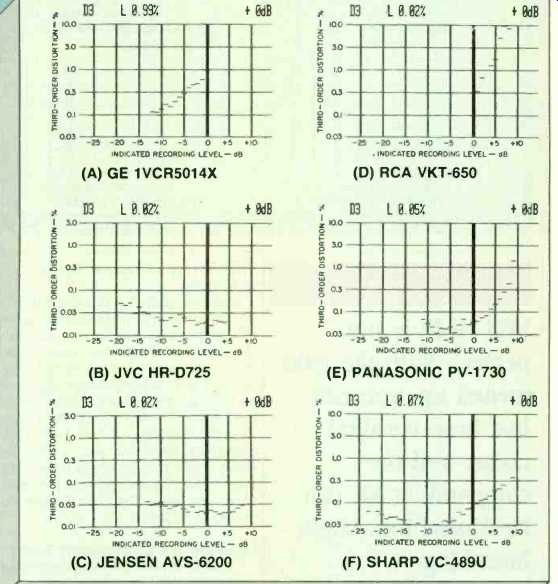
Fig. 5--Third-order distortion vs. indicated recording level, with cursor
marking 0-dB point. (Note shifting scales.)

Fig. 6--Third-order distortion vs. indicated recording level at approximate
3%-distortion point (effective headroom limit). Note that double bar
indicates +10 rather than 0 dB here, except for the RCA unit. Figures
given for each model are headroom limits, to nearest full dB: (A) GE
(not shown, see text); (B) JVC, +15 dB; (C) Jensen, + 15 dB; (D) RCA
(note 0-dB point), +6 dB; (E) Panasonic, +9 dB; (F) Sharp, +11 dB.

Fig. 7--Second-order distortion vs. indicated recording level, with cursor
marking 0-dB point. (Note shifting scales.)
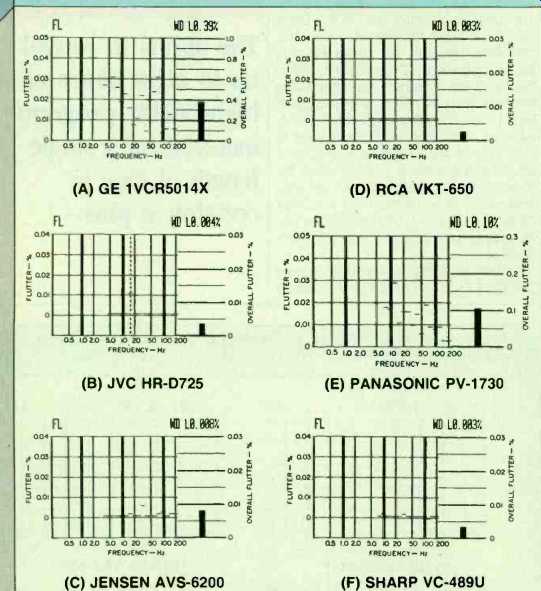
Fig. 8--Wow-and-flutter analysis. (Note shifting scales.)
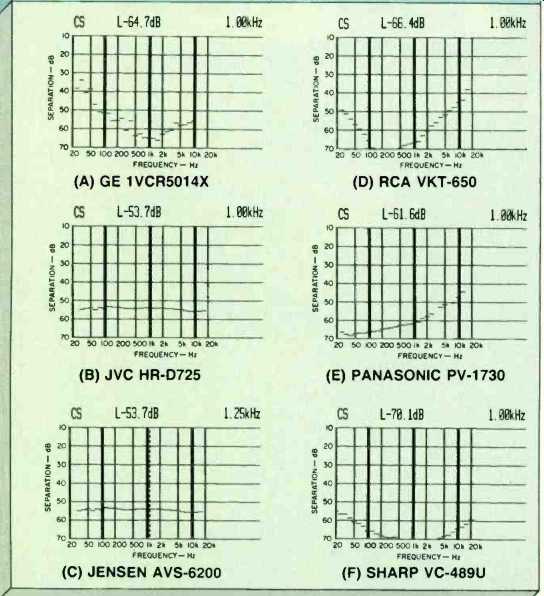
Fig. 9--Channel separation vs. frequency.

TABLE II: AVAILABLE FEATURES
In terms of signal-to-noise ratio, even the poorest performing VHS Hi-Fi unit offered results about 6 dB better than did the non-Hi-Fi unit with Dolby. And as for dynamic range (which is really what counts here), improvement ranged from 16 dB to 26 dB for the five VHS Hi-Fi units compared with the non Hi-Fi model.
While separation was more than adequate for all machines (including the GE model), wow and flutter of the non Hi-Fi unit was intolerably high-nearly four times as high as that of the poorest Hi-Fi VCR and more than 100 times as high as the 0.003% measured for the best of the Hi-Fi units. As for frequency response of the Hi-Fi units measured, all of the results were flat within 3 dB from 20 Hz to better than 20 kHz, with the exception of the Panasonic unit. Its -3 dB cutoff point occurred at 18 kHz.
Listening and Compatibility Tests
I made several musical recordings using all five of the VHS Hi-Fi machines and was able to play all of them back with complete compatibility on four of the five machines. The RCA unit gave me some problems with some tapes, while it tracked others perfectly. I also played a couple of prerecorded VHS Hi-Fi tapes and the same results were obtained. Again, the RCA had some difficulty, which I can only attribute to alignment problems. This unit did play back recordings made on it perfectly, however. The remaining four VHS Hi-Fi units showed no preference for their own tapes over those made on other machines, playing all of the tapes back with equally high fidelity, low wow and flutter and almost imperceptible background noise levels. The easiest way to convince yourself of the benefits of VHS Hi-Fi is to simply switch back and forth between the conventionally recorded (longitudinal) audio tracks and the FM (VHS Hi-Fi) tracks on any VHS Hi-Fi machine. I couldn't help thinking that perhaps the inventors of VHS Hi-Fi had two purposes in incorporating the stationary audio head and longitudinal tracks on these new machines. The first, of course, was for compatibility.
The second may well have been to show prospective purchasers just how great an improvement VHS Hi-Fi offers over the conventional low-fi audio tracks of ordinary VCRs.
Six Audio Channels-- If You Want Them
While I was testing and evaluating these VHS Hi-Fi units, Audio Associate Editor Bert Whyte pointed out something that had not immediately occurred to me. With a VHS Hi-Fi unit, it is possible to record six completely independent audio channels on videotape.
Here's how. First, you hook a PCM processor up to a VHS Hi-Fi VCR's video input and output, while feeding two audio channels to the input of the PCM processor. Then you feed another pair of audio channels to the two hi-fi audio inputs of the VHS Hi-Fi VCR. Finally, after you make your recording, you can wind back the tape and do an audio overdub onto the deck's conventional longitudinal audio tracks. The reason this works, of course, is because the PCM processor's signal looks, for all the world, like a video signal. Since any "video" signal can be superimposed on the VHS Hi-Fi audio tracks, they can be recorded along with the digital audio. Finally, the other two tracks go where the audio always went-on the low-fi longitudinal audio tracks. Just think about the possibilities with this six-track arrangement. It's fantastic-and it works. I tried it as soon as I finished my telephone conversation with Bert! Video Features
While it was not the purpose of my tests to evaluate video performance as such, I did feel that it would be useful to discuss some of the more usual video-related features of each machine so that you can compare them. These features, and their availability on each machine, are summarized in Table II. In case you are not familiar with some of them, here's a brief explanation.
Number of programmable events refers to the number of recording events that can be prescheduled on the machine. One of the chief virtues of a VCR is its ability to "time-shift," allowing you to record programs while you are away or otherwise engaged. The number "8" in Table II, for example, means that you can set up the machine to record eight separate events for specific periods of time, providing the tape doesn't run out.
Programmable period refers td the number of days in advance that the programming can be scheduled.
Some machines allow you to program over only the ensuing 24-hour period, some for a week in advance, some for two or three weeks, and, believe it or not, the RCA VCR I tested lets you program for unattended recording one full year ahead (for those who take very long vacations, I suppose). Slow motion is one of the special effects possible on many late-model machines, along with still-frame or freeze-frame viewing. It allows you to play back pictures at slower than normal speeds (or frame by frame) for close examination of picture content, particularly fast-action sequences.
Viewable speed search, on the other hand, allows you to shuttle forward or backward at rapid speeds while simultaneously viewing the picture on the screen. It is analogous to cue-and-review features found on many audio cassette decks. In most cases, audio is muted during fast video search. Total TV channels refers to the total number that can be accessed by the TV tuner built into the VCR. Even though a VCR may boast over 100 channels (regular TV channels plus cable channels), this doesn't mean that all those channels are accessible from the front panel. Usually, the panel has 14 or 16 channel-select buttons, each of which can be programmed to tune one of the channels available in your viewing area. If a full-function remote control is supplied with the unit, however, it may incorporate a 10-key numeric keypad which would allow you to access any channel number electronically.
Instant record allows you to quickly get into the record mode by touching a single pushbutton. Recording then proceeds for 30 minutes, or for several 30-minute increments if you touch that switch more than once. The feature is useful if you are watching a TV program and suddenly decide that you'd like to preserve it on tape. You don't have to go through the lengthy conventional programming procedure, but can punch in the "instant record" button and then walk away from the set, confident that the machine will turn itself off after the specified number of 30-minute increments.
Most Beta VCRs offer Beta II and Beta III speeds. Many will play back videotapes made in the now-antiquated Beta I speed. VHS utilizes three recognized tape speeds: SP (Standard Play), LP (Long Play), and EP (Extra Play). A T-120 cassette tape will record or play for two hours at the SP speed, four hours at the LP speed and six hours at the EP speed. T-160 tapes are also available and will provide up to eight hours of recording in the SP speed. Since VHS Hi-Fi audio performance is essentially the same at all operating speeds, you can record up to eight hours of high-quality stereo sound on a single videocassette using this new technique. That's more than you can record on a single tape in any cassette deck or, for that matter, on any open-reel machine operating at speeds of 7 1/2 or 15 ips! Auto tape rewind, program cueing, and memory rewind should all be familiar to audio enthusiasts, since they are completely analogous to features found on many audio cassette recorders. Auto tape rewind rewinds the tape at end of play. Program cueing allows you to access the start of the next program on the tape. Memory rewind causes the tape to be rewound to the 0000 point on the tape counter.
Video insert is really possible on all VCRs. It simply means being able to record new video scenes over old ones. Where it is listed as a special feature, however, the manufacturer has incorporated video insert in such a way as to eliminate the "noise bars" that usually accompany such video overdubbing. However, video inserts will erase the Hi-Fi audio track, and overdubbing Hi-Fi sound will erase the video, since both are essentially part of the same composite video signal. You can still use the conventional audio tracks after--a video insert, and some decks let you overdub those tracks. Of course, you can always re-record everything at once.
Conclusions
Lest you think that VHS Hi-Fi is going to offer competition to digital tape recording, let me say that the audio reproduction that I heard using VHS Hi-Fl tapes (those I made and those that were prerecorded) is not "perfect." During very quiet passages of music, with my volume control set at the rather high level I prefer, you can still hear just a bit of residual noise. Then, too, remember that the VHS Hi-Fi system uses a special type of companding to get it up to that 80 dB-plus level of dynamic range. As with almost any companding system (and this happens to be a very good one), there are times when the system can be tricked.
When that occurs, you can hear some slight breathing and pumping. A very severe test (which I tried) consisted of recording the sound of a bunch of jangling keys on VHS Hi-Fi videotape.
This program material is about the most severe test to which you can subject any recording medium. Although the playback results were better than I have obtained using many cassette decks and even some top-grade open reel recorders, they were still far from perfect.
The ability to record up to eight hours of high-fidelity program material on a single length of tape is certainly a plus in favor of VHS Hi-Fi. And while the performance and sound is not quite as good as might be obtained with a digital PCM processor operating with a VCR for audio-only recording, remember that you've got a picture being recorded here at the same time! Sound quality for all of the hi-fi equipped machines was better than that obtained with LaserVision videodiscs (which, themselves, are noted for good sound and excellent fidelity). In short, VHS Hi-Fi is the only way to obtain sound on videotape recordings that is good enough to listen to using a top-grade component system and a fine pair of loudspeakers--the only way, that is, besides Beta Hi-Fi.
(Source: Audio magazine, Nov. 1984)